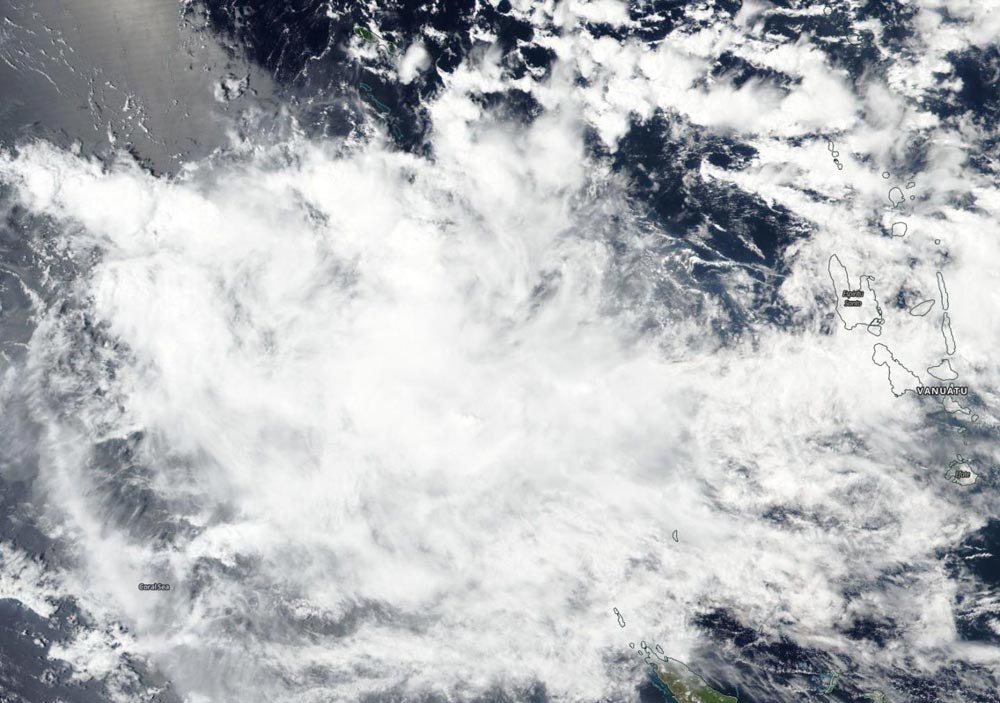

On Dec.4, the VIIRS instrument aboard NASA-NOAA's Suomi NPP satellite captured a visible image of Tropical Storm Owen in the Coral Sea, South Pacific Ocean. Owen was southwest of Vanuatu.
Credit: NASA Worldview, Earth Observing System Data and Information System (EOSDIS)
In general, wind shear is a measure of how the speed and direction of winds change with altitude. Winds at different levels of the atmosphere pushed against the cylindrical circulation center and skewed it, weakening the rotation.
As a result of the wind shear, Owen weakened from a tropical storm to a tropical depression on Dec. 4.
Early on Dec. 4 the Visible Infrared Imaging Radiometer Suite (VIIRS) instrument aboard NASA-NOAA's Suomi NPP satellite analyzed Owen, and showed a disorganized storm with little thunderstorm development.
The bulk of the clouds and showers were pushed east of the center of circulation from wind shear.
On Dec. 4 at 10 a.m. EDT (1500 UTC) Owen's maximum sustained winds had dropped to 34.5 mph (30 knots/55.5 kph). It was located approximately 519 nautical miles east of Cairns, Australia. Owen was moving westward.
Although it is a depression, the Joint Typhoon Warning Center noted that there is a chance the storm may re-strengthen after two days when the wind shear is expected to relax. Forecasters are keeping an eye on Owen.












